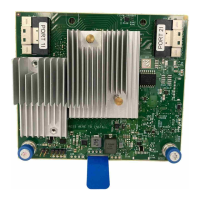Regenerative writesRegenerative writes
Logical drives can be created with background parity initialization so that they are available almost instantly. During this temporary
parity initialization process, writes to the logical drive are performed using regenerative writes or full stripe writes. Any time a member
drive within an array is failed, all writes that map to the failed drive are regenerative. A regenerative write is much slower because it
must read from nearly all the drives in the array to calculate new parity data. The write penalty for a regenerative write is
n + 1 drive operations
where n is the total number of drives in the array.
As you can see, the write penalty is greater (slower write performance) with larger arrays.
This method has the following benefits:
It allows the logical drive to be accessible before parity initialization completes.
It allows the logical drive to be accessible when degraded.

